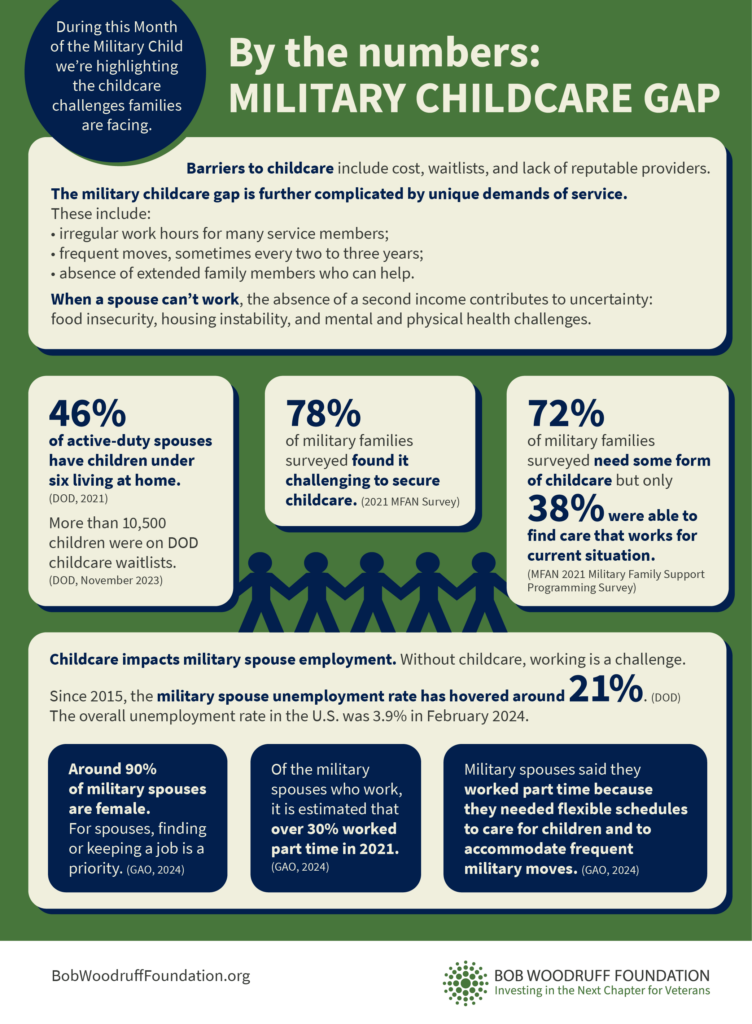Spotlighting the Military Childcare Gap
We have a problem in the US: demand for childcare exceeds supply, and the cost is out of reach for many. Within the military, the childcare gap is further complicated by unique demands of service. These include
- irregular work hours for many service members
- frequent moves, sometimes every two to three years
- absence of extended family members who can help
During this Month of the Military Child we’re highlighting the childcare challenges military families face.

According to Military Family Advisory Network (MFAN) survey in 2021, nearly half of respondents with children under 18 required childcare in the past two years. This includes after-school, drop-in, full-time outside-the-home, and hourly in-home care options. Of those who responded, 78% found it challenging to secure childcare. Barriers include cost, waitlists, and lack reputable providers. Conversely, only 6.5% found it easy to find childcare
Like so many of the challenges our nation’s military community faces, the childcare gap can also impact other aspects of daily life: employment stability, food insecurity, housing instability, and mental and physical health.
Unaffordable or limited childcare options force many military spouses—often women—to sacrifice their careers or shelve their dreams of higher education to care for their children. When high childcare costs eat too much of a family’s income, there’s less for essentials like food and shelter or for financial emergencies. When a military family can’t find childcare, it can be a struggle to balance service demands with parenting responsibilities. This imbalance can impact a service member’s ability to deploy or remain on duty—affecting military readiness.
Sources
2021 Military Family Support Programming Survey Results
2021 Spouses Survey
Military Spouse Employment (GAO)









